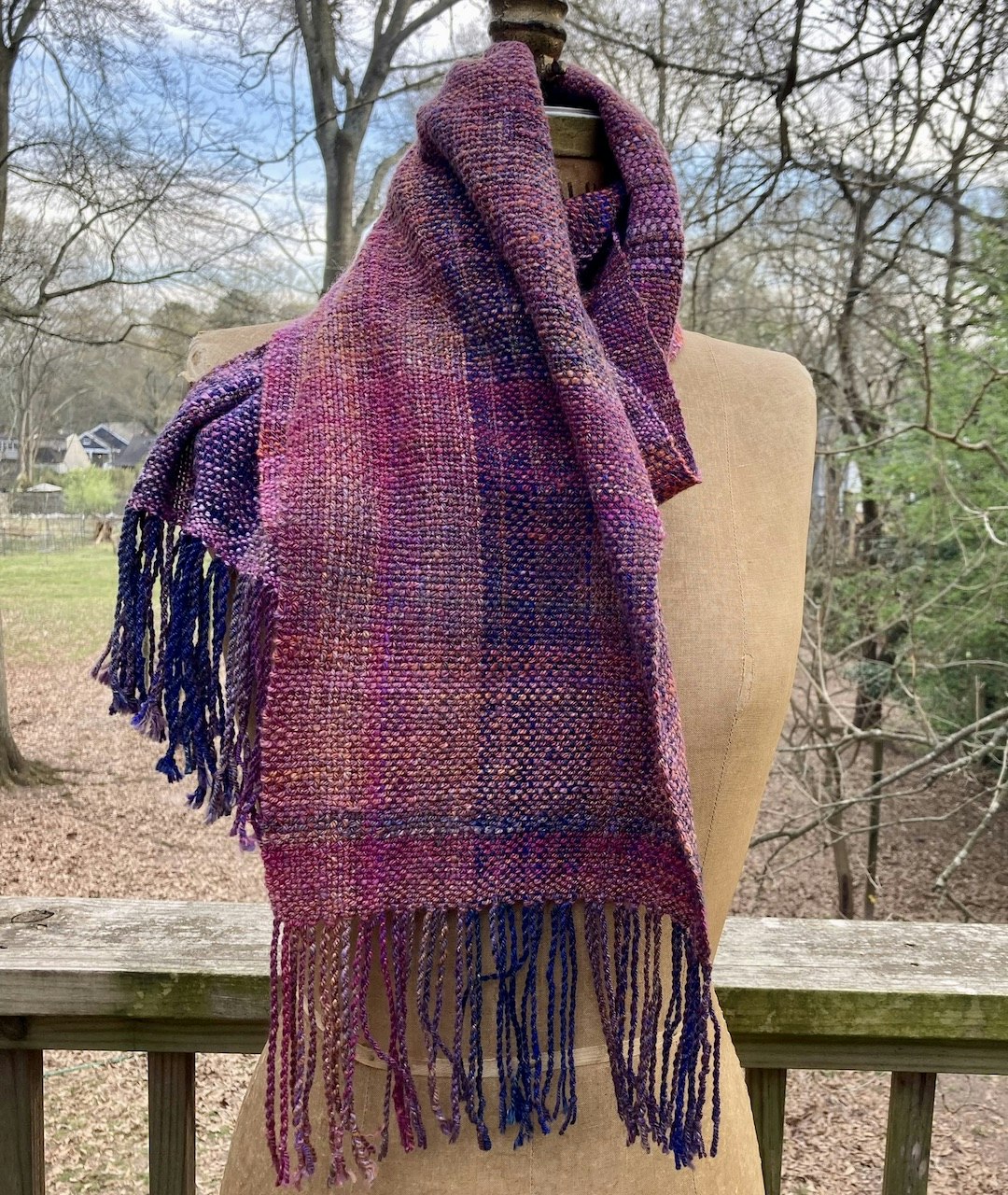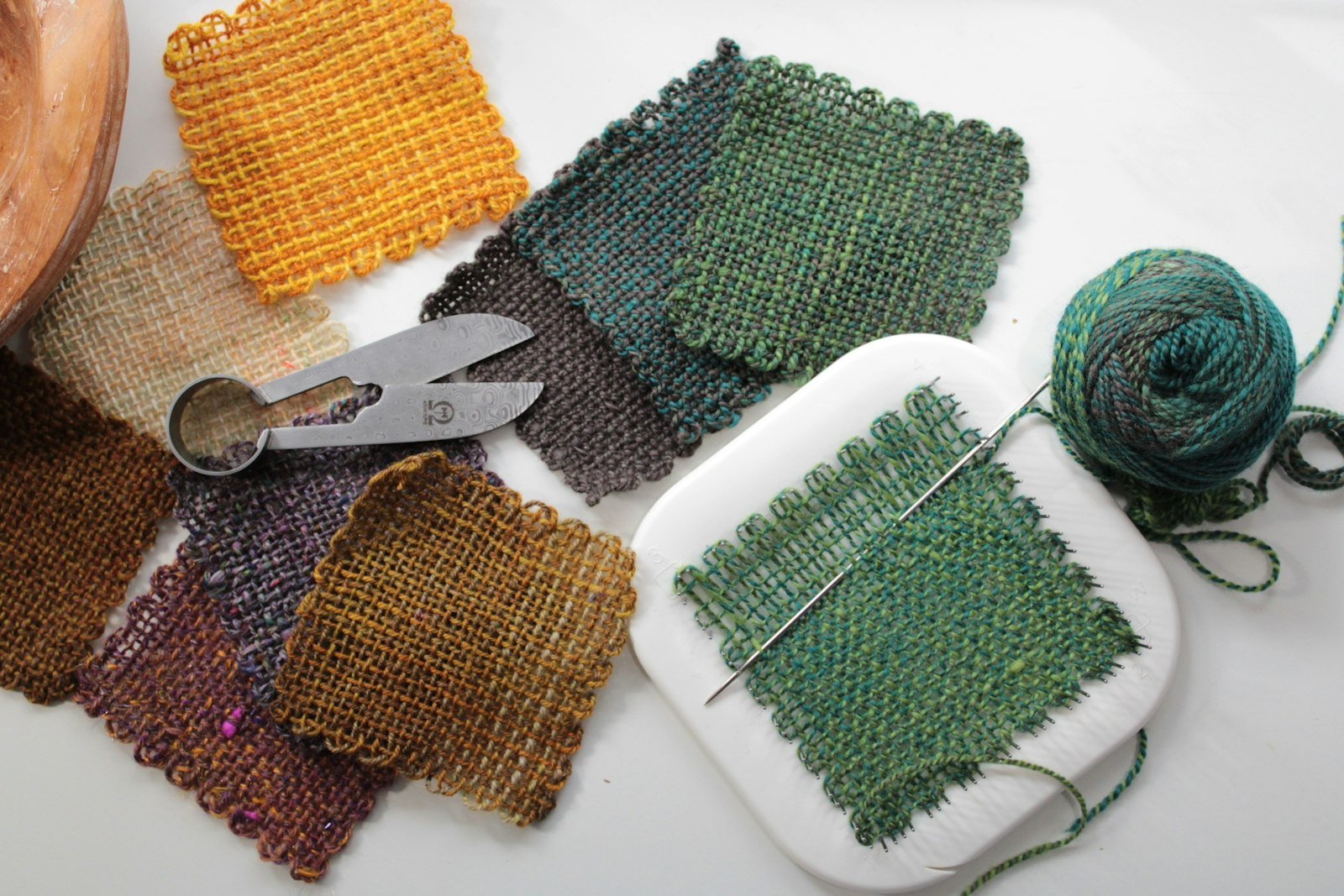For our Fall 2024 issue all about blending fibers I knew I had to get somebody to write about spinning and weaving. That somebody ended up being spinner-weaver extraordinaire Debbie Held. Her article was so good it inspired me to pick up a spindle and start spinning. Below is an excerpt of her article. To read the whole thing, icnluding more tips, check out the Fall 2024 issue today! —Christina
When it comes to yarn-related activities, I identify as a handspinner above all else. However, I am a spinner who also weaves, and it was my love of spinning that spurred me toward learning to weave, much to my own surprise. In fact, I now believe that spinning is the best skill that anyone interested in weaving—particularly with small looms such as inkle or rigid heddle—can learn for better, more nuanced, and more productive weaving.
Now, before you talk yourself out of reading further or start muttering, “I don’t need another hobby,” please let me convince you. We all have our limitations, be they related to space, time, or money. When I learned to spin and then weave, I was deep in the throes of all three limitations. Fortunately, you can start spinning for less than $50, about the cost of a 1-ounce basic spindle and some quality spinning fiber. Together, these supplies take up very little space and can provide hours of enjoyment—a bargain, really. Or, if you’re as fortunate as I was, you might have a zealous friend eager to share her hobby with you who will gladly loan you a spindle.
For what it’s worth, I fought this friend tooth and nail. I told her, “I already have all the yarn a person could ever knit. Why would I want to make even more?” At the time, I just didn’t get the point, but now I am a person who can admit when she’s wrong.
 Debbie made this shawl on a rigid-heddle loom using her handspun yarn.Photo by Debbie Held*
Debbie made this shawl on a rigid-heddle loom using her handspun yarn.Photo by Debbie Held*
Like weaving, spinning is logical and empirical. The more hands-on time you put into them, the more sense they make. Both require learning by doing and time spent practicing, but there’s also room for those of us who like to color outside the lines, so to speak. For me, exploring yarn from the ground (or animal) up turned out to be a way to appreciate textiles that I’d never anticipated. I noticed measurable changes in my own knitting abilities, which improved exponentially with my spinning knowledge. I also gained a practical and instinctive understanding of gauge and yards per pound and how to make appropriate yarn substitutions (first commercial, then handspun) based on my desired results.
I began to feel braver, smarter, and generally more adept. The only problem? I couldn’t knit fast enough to keep up with my growing collection of handspun yarns. Weaving, touted as a faster use of any yarn, was my next logical step. (Spoiler alert: it is.)
I found my niche with a 15-inch Cricket rigid-heddle loom, gifted by a long-distance spinning friend. Years later, this is still my go-to loom, despite eventually securing both a four-shaft table loom and a sturdy jack floor loom on my own. For me, there’s just something magical about the pairing of the rigid-heddle loom with handspun. Each elevates the other. The handspun makes for one-of-a-kind cloth and does all the hard work for you, making even plain weave sparkle.
Need more reasons why the combination of spinning and small-loom weaving is ideal?
• Small looms (including pin looms and handheld frame and tapestry looms) are ideal for weaving short lengths and scraps of handspun. You can explore the hand and interplay of almost any yarn composition or ply structure on these low-tension, low-yardage, “quick” looms. • Small looms are low waste. We spinners put a lot of care and effort into making our yarns. Small looms allow for minimal waste of our precious handspun. • Save money. Just kidding! But you can claim more value for every dollar spent on fiber, since you’ll both spin and weave with it—it’s a twofer.
I got the point, too, even if I borrowed that first spindle on faith alone. Spinning with intention leads to creating most any yarn you can envision, which leads to effortless weaving with your small looms. I hope you’ll try spinning—and if you do, allow yourself time to grow into your new craft. Skill doesn’t happen overnight. I promise that you won’t regret the effort, though you may ask yourself why you didn’t learn to spin sooner.

